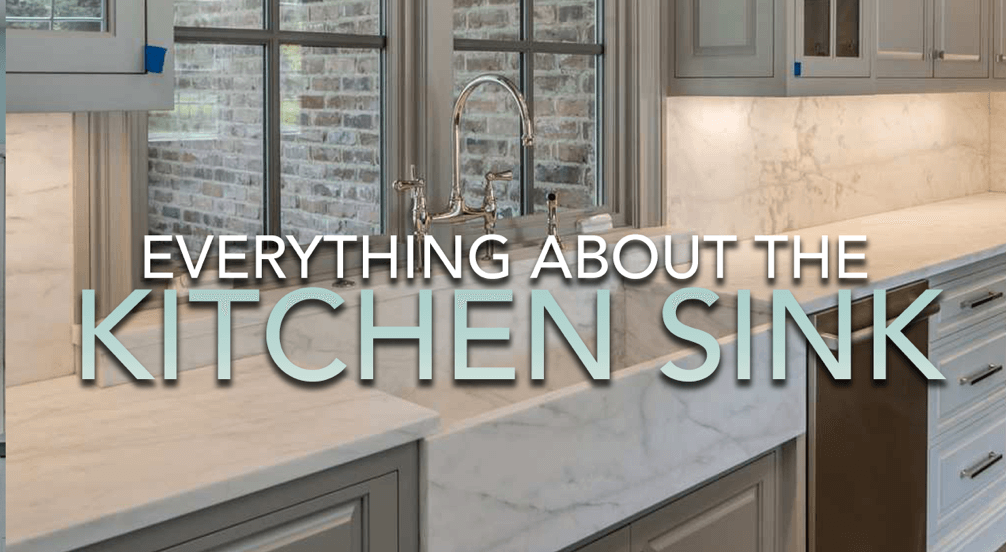The Kitchen Sink
A surprising number of options are now available for kitchen sinks. The kitchen sink’s material, it’s style and the number of sinks are the three keys to narrowing down your design. Before your contractor bombards you with questions, you should familiarize yourself with the different sink options so you can communicate your plans clearly to your builder.
Sink Materials
Traditionally, kitchen sinks are made of stainless steel or enamel-coated cast iron. They are durable and long-lasting. Stainless-steel sinks are good for heavy use and washing pots and pans. The enamel-coated sink is susceptible to chipping and unfortunately, is not as durable as the stainless.
Composite sinks are the current trend. The term “composite” means that the sink is created with two or more different materials. Naturally tough, durable, and heat resistant, composite sinks include quartz, acrylic, and granite. Quartz sinks are a combination of quartz and resin. This is a relatively affordable option. Acrylic sinks, because they are combined with fiberglass, are the most affordable of the composite sink options. Granite is the costliest version but will give your kitchen a high-end, designer look.
Sink Styles and Mounts
In the past, kitchens had two identically-sized sink basins. This was ideal for most homeowners, as many were still hand-washing their dishes. With the advent of dishwashers, kitchen designers began to question the twin-basin sink design and more options emerged.
One option is to use a single basin for your kitchen sink. One large, deep basin that is big enough to fill a large stock pot or hand wash a large cookie sheet. Another option is the double basin style of sink. Homeowners can choose from twin basins or sinks with one large basin and one smaller one, and even one deeper basin and one shallower.
Kitchen sinks are usually attached to the counter in one of 3 basic ways.
- Top mount, or drop-in sinks are the most common style, and involve positioning the sink complete with overlapping lip when your countertop is in place. The advantage makes it easy to replace and installation is less complicated. The disadvantage is the overlapping sink edge needs to be caulked with silicone and makes the counter area more difficult to clean.
- Undermount sinks are seamless and contemporary in appearance. The advantage of this style is the elimination of the mounting rim sitting on top of your counter. Water and food debris are wiped from the countertop straight into the basin. The disadvantage would be that the
- Apron front, or farmhouse sinks have been a distinctive design trend over the last few years. Advantages are that they are ergonomically deep and wider, making both cooking and cleaning easier tasks. The disadvantages are the costs vary greatly depending on material, like fireclay sinks. Installation is more complicated due to the sheer weight of the sink and supports needed for proper completion.
The Magic Number
The final decision you need to consider is how many sinks you want in your kitchen. This was an easy decision in the past; homes had just one sink area in the kitchen. But, in today’s chef’s kitchen, it is not uncommon to have more than one sink area. In addition to the traditional kitchen sink, homeowners also add a prep sink, vegetable sink, or a wet-bar sink. Often incorporated into the kitchen island, the prep sink is a smaller sink that is conveniently located to food preparation areas. The wet-bar sink is located near the bar and provides an easy spot for disposing of drinks and ice. The vegetable sink, like the prep sink, is small and usually has a lot of countertop space around it for chopping.
At the end of the day, all of these decisions come down to personal preference. Consult with your designer if you have questions or concerns.








